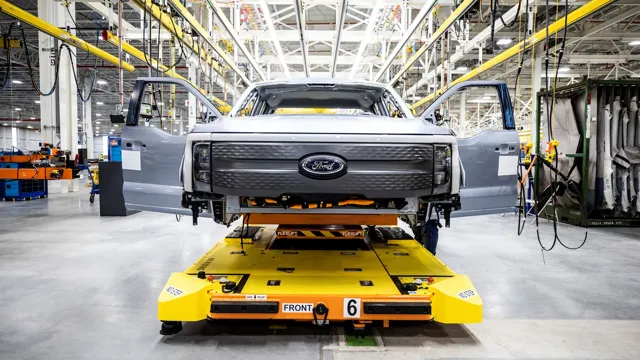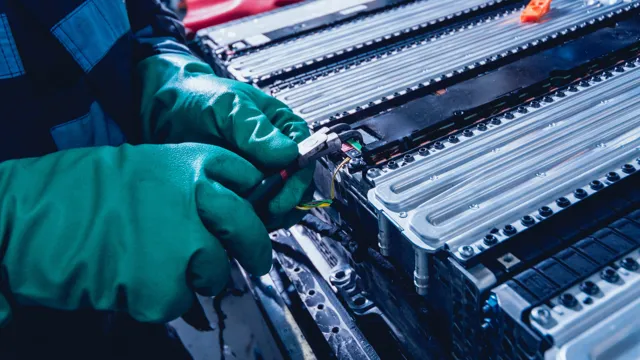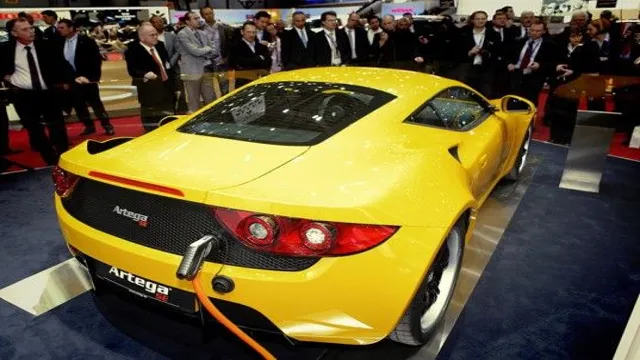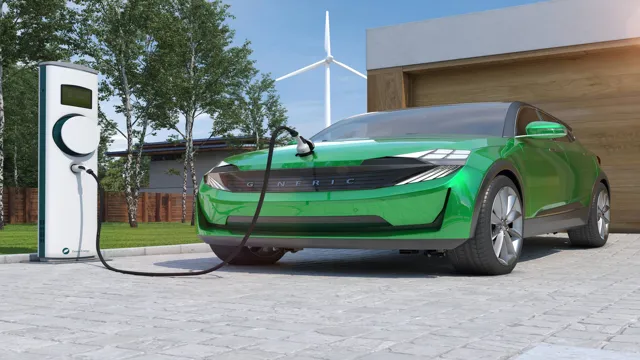10 Surprising Things EVs Might Not Need: Saving You Money and Energy
When it comes to electric vehicles (EVs), most people are familiar with popular models like the Tesla Model S or the Nissan Leaf. However, there are many lesser-known EVs on the market that may not need all of the features that come with these more expensive, well-known models. For example, some drivers might not need the longest range or the most advanced technology available, and may be satisfied with a simpler, more affordable EV model that meets their basic needs.
In this blog post, we’ll take a closer look at some of these lesser-known EVs and explore why they might be a great choice for certain types of drivers.
Large Batteries
Large batteries are essential for electric vehicles (EVs), but there are some models that may not need them. For example, low-speed city cars or golf carts don’t require large batteries because they don’t travel far distances. Instead, these types of vehicles rely on smaller batteries that are cheaper and easier to maintain.
On the other hand, EVs that are designed for longer commutes and highway driving need larger batteries to support their energy needs. The size of the battery is also dependent on the vehicle’s weight and the driving conditions, with hilly terrains requiring more battery power than flat roads. As battery technology advances, we may see even more EVs that can go longer distances without requiring large batteries, making electric transportation more affordable and accessible for everyone.
Why Some EVs Can Go Further with Less
One of the biggest factors affecting the range of electric vehicles (EVs) is the size of their battery. In general, the larger the battery, the farther an EV can go on a single charge. However, some EVs with smaller batteries can actually travel further than those with larger ones.
This is because the size of the battery is not the only factor that affects range. Other factors include the weight of the vehicle, the efficiency of the motor, and the aerodynamics of the body. A lighter vehicle with a more efficient motor and better aerodynamics can travel further on a smaller battery than a heavier vehicle with a less efficient motor and worse aerodynamics.
That’s why it’s important to look at a number of factors when considering the range of an EV, not just the size of its battery.
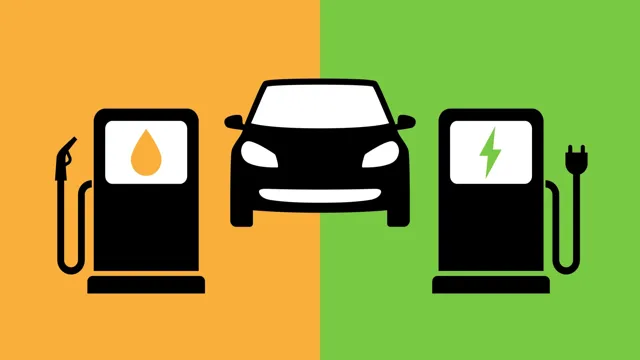
Models For Shorter Commutes and Urban Driving
Large Batteries When it comes to shorter commutes and urban driving, large batteries are becoming more popular as a solution to the increasing demand for electric vehicles. These large batteries are capable of storing enough energy to take drivers longer distances, reducing the need for frequent charging. Additionally, a larger battery allows for quicker acceleration and boosts the overall performance of the vehicle.
While these batteries may be more expensive, they are worth the investment for those who need to travel longer distances on a daily basis. Furthermore, larger batteries can handle charging at a faster rate, making it possible for drivers to recharge quickly and efficiently. With advancements in technology, we can expect to see even more powerful large batteries becoming available in the near future, which will continue to improve the driving experience for electric vehicles.
So, if you require a vehicle for urban driving with a shorter commute, a large battery may be the best option for you.
Fancy Touchscreens
When it comes to car technology, fancy touchscreens might not always be necessary. Sure, they may look sleek and impressive, but they can also be distracting and difficult to navigate while driving. Many modern cars now come with voice recognition systems, which allow the driver to safely and easily control various features without taking their eyes off the road.
Additionally, physical buttons and knobs can provide a more intuitive and tactile experience. And while touchscreens may seem like a necessity for features such as GPS navigation, many cars now offer smartphone integration, allowing drivers to use their own devices for these services. So, while touchscreens may add a certain level of glamor, they might not always be the most practical or safe option.
It’s important to consider what features are truly necessary for a smooth and safe driving experience.
Alternatives to High-Tech In-Dash Displays
Fancy touchscreens have become the norm in modern vehicles, but not everyone wants or needs all the high-tech bells and whistles. Luckily, there are plenty of alternatives available for those who prefer a simpler, more traditional approach. For instance, some car manufacturers offer basic display screens that show important information like speed and fuel level, without all the extra features like GPS navigation and voice commands.
Others use analog gauges and dials to provide the same information in a more classic style. Another option is to use your smartphone for navigation and media playback, instead of relying on in-dash technology. This can be done by using a phone mount or Bluetooth connection to stream audio to the car’s speakers.
With these alternatives, you can enjoy a more straightforward driving experience without sacrificing safety or functionality.
Models That Prioritize Safety and Simplicity
When it comes to car technology, fancy touchscreens have become increasingly popular. However, while they may be visually appealing, they can also be distracting and even dangerous for drivers. That’s why many car manufacturers are returning to models that prioritize safety and simplicity.
These models feature straightforward interfaces that allow drivers to easily access necessary information without diverting their attention from the road. Rather than relying on complex graphics and menus, these models prioritize functionality, with clear, easy-to-read displays and intuitive controls. By prioritizing safety over flashy features, these car models offer a valuable lesson to drivers: sometimes, the simplest solutions are the best.
Futuristic Exterior Design
When it comes to futuristic exterior design, there are a lot of possibilities that EVs might not need. For instance, traditional side mirrors could become completely obsolete. Many automakers are already replacing them with cameras and digital displays.
This not only looks sleeker, but it can also improve aerodynamics and fuel efficiency. Another feature that may become obsolete is door handles. Some concept cars already feature doors that open with a wave of a hand or a key fob.
This could improve convenience and reduce the chances of accidental dings or scratches. Finally, some concepts show completely autonomous vehicles without any windows at all, which could eliminate the need for windshields and could improve safety by reducing the risk of driver distraction. As we continue to explore new possibilities, it’s exciting to imagine what’s next for the future of EV design.
Sleek and Practical EVs for Everyday Use
When it comes to sleek and practical EVs for everyday use, futuristic exterior design is becoming increasingly popular. This not only makes the EV stand out in a sea of bland cars but also serves a practical purpose. Unique and eye-catching designs help to create brand awareness while also attracting more customers towards the brand.
Practicality also plays a key role in the design of EVs. Many manufacturers are opting for a minimalist design, which eliminates unnecessary features on the exterior, making the EV more aerodynamic and energy-efficient. This design language also translates to the interior of the vehicle, with minimalist and functional layouts becoming more popular.
Overall, futuristic exterior design helps to create a more visually appealing and practical EV, which not only benefits the manufacturers but also the customers who get to enjoy the benefits of a more efficient and stylish vehicle.
Cars with Traditional Looks That Hide EV Components
When we think of electric vehicles (EVs), we often think of futuristic and unconventional designs. However, there are some cars out there that have traditional exteriors but are hiding cutting-edge EV components. These cars merge the timeless charm of traditional looks with the eco-friendliness of EVs.
They may look like classic cars, but under the hood, they are fit with advanced technologies that make them efficient and resourceful. These EVs are the perfect choice for those who want to make a difference but don’t want to sacrifice classic style. They are the embodiment of technology meets tradition, proving that innovation can coexist with classic aesthetics.
It’s a clever way to blend the old with the new to create something unique. As we move forward, we can expect to see many more EVs that adopt this approach, offering a fresh and innovative take on traditional design. Who knows? Maybe one day, we will see an EV that looks like a 1967 Mustang, but with the latest technology that could make Doc Brown from “Back to the Future” jealous.
Fast-charging Capabilities
One feature that electric vehicles (EVs) might not need in the future is fast-charging capabilities. This may seem counterintuitive, as fast charging is often touted as one of the biggest advantages of EVs over traditional gas vehicles. However, as battery technology continues to improve, EVs may no longer require ultra-fast charging speeds.
This is because longer-range batteries that require less frequent charging will become more common. Additionally, newer EV models will be designed to charge more efficiently, making the need for high-speed charging less imperative. While fast-charging capabilities will likely remain an important selling point for EVs in the short term, it may not be a defining feature in the future as battery technology advances and charging becomes more efficient.
Models Best Suited for Home Charging
If you’re looking for a car model that’s best suited for home charging, you’ll want to pay attention to the ones with fast-charging capabilities. These vehicles can handle higher charging currents without causing damage to the battery, which means you can charge your car more quickly. Models like the Tesla Model S, Chevy Bolt EV, and Nissan Leaf all have fast-charging capabilities that allow you to charge your car to about 80% in under an hour.
This is incredibly convenient for people who want to be able to charge their car quickly and efficiently while they go about their day-to-day activities. If you’re someone who frequently takes long road trips, a car with fast-charging capabilities will definitely make your life easier. So, if you’re in the market for a new car and want to make home charging as easy as possible, be sure to look for one with fast-charging capabilities.
EVs You Can Charge in a Pinch Without a Fast-Charge Port
When it comes to electric vehicles, fast-charging capabilities are often a top priority for drivers. However, not all EV models come equipped with a fast-charge port. This doesn’t mean you’re out of luck if you need a quick charge on the go.
Some EVs can still charge in a pinch without a fast-charge port. These models may take longer to charge, but they can still get you back on the road. One example is the Nissan Leaf, which can be charged on a standard 120-volt outlet or a Level 2 charging station if you have more time.
Another option is the Tesla Model S, which can use a standard 120-volt outlet or a Tesla destination charger if you plan ahead. While fast-charging is convenient, it’s good to know that some EVs can still be charged in a pinch even without a fast-charge port.
Conclusion
In the end, it turns out that what evs might not need is gasoline and a traditional engine. With the power of electricity and innovative technology, these vehicles are revolutionizing the way we think about transportation. Who knows what else we’ll discover that our vehicles can do without in the future?”
FAQs
What are some items that might not need to be refrigerated?
Items such as bread, potatoes, onions, and bananas do not need to be refrigerated.
Can electronics be recycled?
Yes, electronics such as phones, computers, and TVs can be recycled.
Do all plants need direct sunlight?
No, some plants like ferns and peace lilies can thrive in low light conditions.
Is it necessary to hire a professional photographer for a wedding?
It depends on the couple’s preference, but many choose to hire a professional photographer to capture high-quality photos of their special day.
